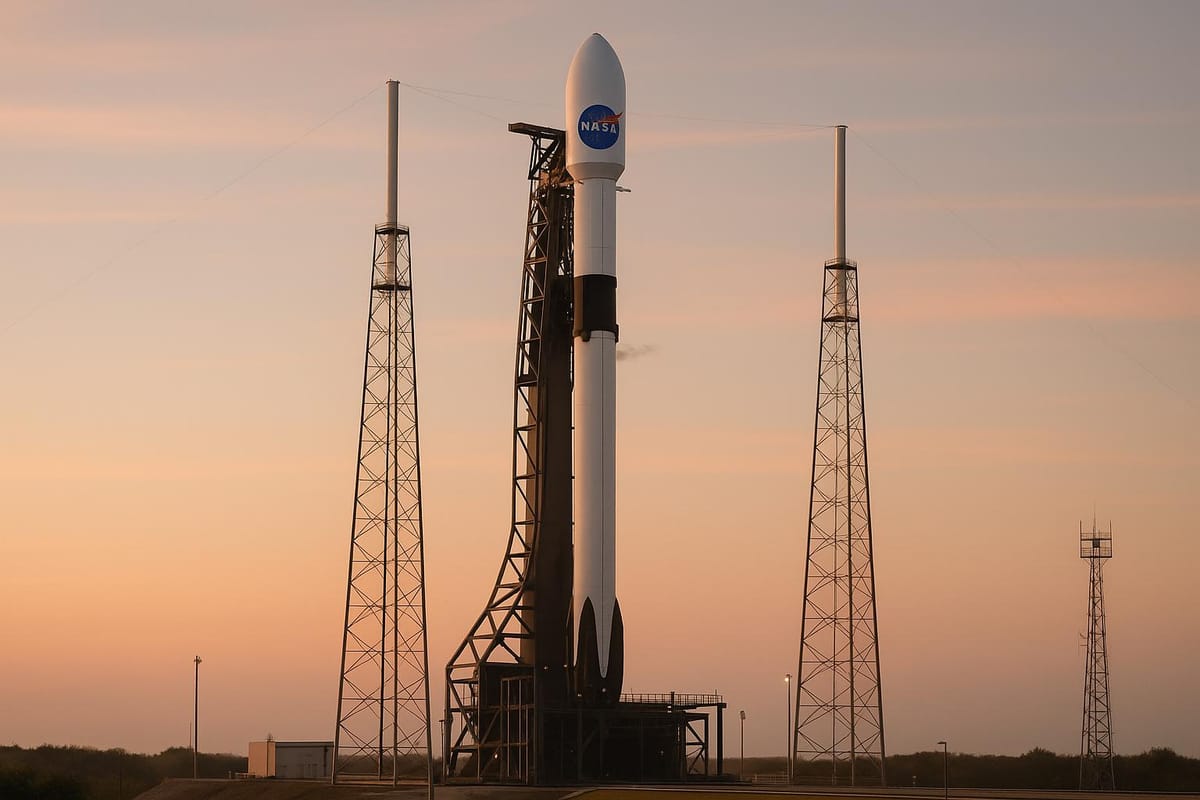SpaceX scheduled to launch NASA's Solar System mapping mission on September 23
NASA and SpaceX to launch IMAP on Sept 23 to map heliosphere boundaries and study solar wind.

NASA is preparing to embark on a groundbreaking mission to chart the unexplored edges of the Solar System’s protective boundary. On September 23, the Interstellar Mapping and Acceleration Probe (IMAP) will launch aboard a SpaceX Falcon 9 rocket from the Kennedy Space Center in Florida at 7:32 a.m. EDT. This mission aims to deepen our understanding of the heliosphere, a vast protective bubble around the Solar System formed by the solar wind streaming from the Sun.
Decoding the Heliosphere’s Role
The heliosphere, an immense region of charged particles, extends far beyond Pluto and forms a shield that protects planets, including Earth, from harmful cosmic radiation. NASA scientists aim to uncover more about the structure and behavior of this solar bubble, including its size, shape, and the role it plays in planetary evolution. This research not only aids in understanding the fundamental physics of the heliosphere but could also help shed light on how planets across the universe retain atmospheres and support life.
"The heliosphere acts like a giant shield", NASA said, emphasizing its critical role in maintaining conditions for life within our planetary system.
IMAP’s Mission Objectives
IMAP’s primary goal is to investigate the boundary of the heliosphere and analyze how the solar wind interacts with interstellar space. Once launched, the spacecraft will travel to the Earth-Sun Lagrange Point 1 (L1), a stable region of gravitational balance roughly 930,000 miles from Earth. This vantage point offers a unique opportunity to observe solar activity, monitor solar wind, and detect potentially dangerous radiation storms.
Equipped with over ten advanced instruments, IMAP will measure charged particles, solar weather, and hydrogen atoms to provide a detailed examination of the heliosphere’s protective barrier. According to NASA, this data will "help us better understand the fundamental physics of the heliosphere" and could reveal critical insights about the forces shaping Earth's immediate environment.
Insights from Experts
Principal investigator David McComas highlighted the mission’s significance, stating that the findings will expand our understanding of the heliosphere’s protective capabilities. "We actually don’t know exactly how big it is", added Lara Waldrop from the University of Illinois. "We don’t know whether it’s spherical or oval, how much it changes over time, or even the density of its constituent hydrogen atoms." Waldrop also noted that the exosphere - the outer layer of Earth’s atmosphere - plays a critical role in shaping how the planet responds to geomagnetic storms.
By observing the exosphere from the L1 point, researchers hope to refine models of how atomic hydrogen escapes Earth’s gravity, which could have implications for planetary evolution. Additionally, this research may contribute to the search for habitable exoplanets by improving scientists’ understanding of how planets develop atmospheres capable of supporting life.
Collaborative Efforts
The IMAP mission is joined by additional spacecraft developed by the U.S. National Oceanic and Atmospheric Administration (NOAA) and NASA’s Carruthers Geocorona Observatory, further broadening the scientific scope of this ambitious project. Together, these instruments will provide a comprehensive view of the Sun-Earth environment and its interplay with interstellar space.
As the launch date approaches, excitement builds for the insights IMAP promises to deliver. From investigating the solar wind to enhancing our understanding of planetary habitability, this mission could revolutionize our knowledge of the Solar System’s boundaries and the forces shaping life on Earth.
Comments ()